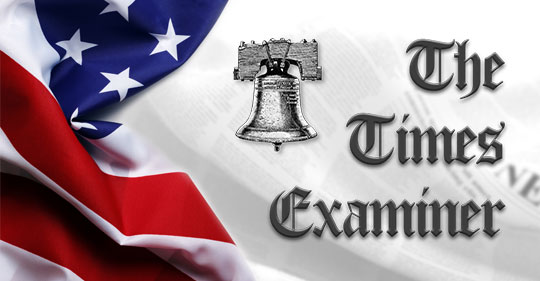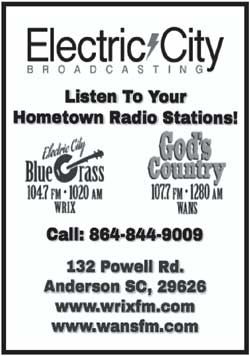Background for Factual, Historical, and Demographic Analysis

Western mass media propaganda creates the impression that Ukraine is a virtuous democratic country united against an “unprovoked invasion” by Russia on February 24, 2022. There are two major factors that caused Russia’s Special Military Action that might more rightly be called an intervention rather than an unprovoked invasion. First of all, in 2008 at the Bucharest NATO Summit, George W. Bush, probably heavily influenced by Dick Chaney, Bush’s Vice President from 2001 to 2009, pushed NATO to make Ukraine and Georgia members. This was all part of an intrigue and “Great Game,” started by the British and including the Crimean War of 1853, to block Russia from access to the Black Sea. At the NATO Summit in 2008, Bush got some pushback from Germany and France, but nevertheless pushed through a NATO resolution to make Ukraine and Georgia members of NATO. At the time, Ukraine was constitutionally neutral and a majority of Ukrainians had no interest in NATO or the European Union. A large part of their trade was with Russia.
According to former Assistant Secretary of State Victoria Nuland, the U.S. spent $5.0 billion converting Ukraine from neutrality and a collegial association with Russia to an anti-Russian bulwark. This was done with the help of the CIA and British MI6. In addition, George Soros added about $180 million through subversive phony-democratic NGOs. However, a large portion of the Ukrainian population, about 40 percent, identify as Russian or of mixed Russian and Ukrainian ancestry and culture.
In addition to the NATO alliance issue, there is an ethnic issue dealing with the large Russian and mixed Russian and Ukrainian minority that has played a very strong role in the Russian-Ukraine conflict.
It might surprise most people to learn that only about 60 percent of “Ukrainians” within the 1990s borders of Ukraine considered Ukrainian their native language. About 18 percent considered Russian their native language, and another 22 percent considered both Russian and Ukrainian to be their native languages. A small percent in western Ukraine, bordering Hungary, use Hungarian as their native language. Russian and Ukrainian are closely related languages, and their culture and religious affiliations are also closely related. There is also a considerable overlap in their DNA. Beginning as early as 2004, ambitions to draw Ukraine into a Western alliance resulted in Western-backed Ukrainian politicians pursuing anti-Russian campaigns that would eventually evolve into cultural and ethnic cleansing of anything Russian. At least since 2004, Ukrainian elections have reflected regional ethnic and cultural divisions between Ukrainians and Russians.
In 2010, Ukraine elected Viktor Yanukovych president. Yanukovych was a former Governor of the heavily Russian Donetsk Oblast and a former Prime Minister. He favored neutrality and continued good relations and trade with Russia. The vote reflected Ukraine’s regional concentration of Russian culture and language. We can learn a lot by looking at the results, which show a sharp division between most of Ukraine and the heavily populated Russian majority in southern and eastern Ukraine.
In 2013, U.S. President Barack Obama approved the overthrow of the Ukrainian government headed by pro-neutral, pro-Russian Viktor Yanukovych. Obama’s primary instruments were then Vice President Joe Biden, Assistant Secretary of State Vitoria Nuland, Ambassador Geoffrey Pyatt, and now National Security Advisor Jake Sullivan. The U.S. State Department, CIA, and British MI6 were heavily involved in backing the anti-Russian ultra-nationalists during the bloody Maidan Revolution from February 18-20, 2014. The most destructive and murderous of these mass protest rallies, most of which were in Kyiv’s Maidan Square, resulted in the deaths of 74 Maidan protesters and 17 police and Internal Security Troop members. Ukrainian Professor Ivan Katchanovski, now teaching in Canada, has documented that at least 10 were shot by Maidan activist snipers associated with the extreme nationalist Svoboda Party, some firing from the Hotel Ukrainia. This ultra-nationalist Ukrainian massacre was then blamed on Yanukovych, who had to flee the country. Suggested reading: The Maidan Massacre in Ukraine: The Mass Killing that Changed the World, 2024.
On taking over the government, the new Ukrainian leadership, approved by Nuland, Pyatt, Sullivan, and Biden, began to legislate and enforce ethnic cleansing laws that forbade communicating, teaching, or broadcasting in Russian; and teaching Russian history. The Ukrainian Orthodox Church, which had a connection to the Russian Orthodox Church was soon banned, and their properties confiscated. This was to make Ukraine more Ukrainian and anti-Russian.
On May 2, 2014, 49 pro-Russian protestors were killed or burned-alive at the Odessa Trade Union Building by crowds of Maidan revolutionists. Violence grew and turned into a civil war pitting the Ukrainian Army against Russian minority militias in 2014 and 2015.
A Minsk 1 agreement in August-September 2014 failed to maintain a cease-fire. Over 14,000 were killed in a civil war that had not ended in February 2022. The Minsk 2 agreement of February 2015 agreed to autonomous status for the Donetsk and Lugansk republics under Ukraine and full civil rights for Russian language, culture, and religion. These measures were agreed to by Ukraine, Russia, France, and Germany with UN sanction and tacit U.S. and UK approval. However, this was never implemented by Ukraine and finally betrayed by Ukraine in February 2022. French and German leaders later admitted that Minsk 2 was only a ruse to give Ukraine time to build up its Army again before attacking Donetsk and Lugansk and “taking back” Crimea.
Broken promises to Russia in 1990 on limiting NATO expansion and the betrayal of the Minsk 2 agreement have destroyed Russian confidence in U.S., NATO, and Ukrainian promises or agreements.
Putin, however, has respect for Trump. Trump is an American nationalist, and Putin is a Russian nationalist. Both want peace, but on what terms? What internal influences affect Trump and Putin respectively?
Ukraine being a member of NATO or anything but neutral and non-nuclear is absolutely out of the question for Putin. Giving back Donetsk, Lugansk, Crimea, Kherson, and Zaporizhia will not be considered by Putin,
The Russians are now obviously winning the war and moving further west. Russia’s estimate of over a million Ukrainian military dead or permanently disabled is probably correct. Ukraine is running out of men, ammunition, and supplies, and its economy is near collapse. It is almost totally dependent on the U.S.
A British estimate, which I believe to be high, has Russian casualties at 84,000 dead and seriously wounded. Ukrainian propaganda has been wildly false from the beginning. Following the casualty issue and sifting out outrageous Ukrainian and CIA propaganda, I believe the ratio of Ukrainian to Russian killed is probably 12 to one and getting higher. The Russians have better than 8 to one artillery dominance, and about 80 percent of Ukraine war casualties are from artillery. Russia also has near complete air, air defense, and missile dominance, and is passing the U.S. in many war technologies.
Trump should be extremely cautious about Ukrainian claims about anything. U.S. intelligence is also in my opinion more Neocon propaganda than objective truth and analysis. Unless Trump cleans the U.S. intelligence swamp out, he is going to be continually misinformed and blindsided. He desperately needs someone like Tulsi Gabbard to help clear the swamp and help him get the facts and analysis right.
The main negotiation if any, will be what territory will be left to Ukraine. The worst case for Ukraine is probably losing all the Russian majority oblasts in southern and eastern Ukraine. Judging by the Ukrainian record of oppressing its Russian minorities in the last 10 years, would any of these majority Russian regions be willing to be part of Ukraine again?
It will be helpful to review a brief analysis of the 2010 presidential election to understand the ethnic issue, and where it might lead.
On February 7, 2010, in the final runoff election for President of Ukraine, pro-neutrality and pro-Russian former Prime Minister Viktor Yanukovych won with 49.55 percent of the vote against pro-Western Yulia Tymoshenko, with 45.47 percent of the vote. Another 4.6 percent of the voters voted for “against all,” the equivalent of “none of these.” There were 25 voting oblasts (states) or cities. I have combined Kyiv City and Kyiv Oblast into one and Crimea and its major port city of Sevastopol into one, leaving 23 oblasts or regions for simpler analysis. About 25.5 million people voted, reflecting a healthy 68 percent turnout. This includes about 1.2 percent whose ballots were found invalid and 45,000 valid votes from overseas.
Nine regions/oblasts in eastern and southern Ukraine voted for pro-neutral, pro-Russian Viktor Yanukovych. In fact, they voted heavily for Yanukovych, giving him 60 to 90 percent of the votes in these oblasts. These oblasts are all predominantly Russian ethnic and Russian-speaking and have been since the reign of Catherine the Great, 1762-1796.
These essentially Russian ethnic regions are some of the most populous oblasts within the pre-2014 borders of Ukraine. In fact, seven of nine cast over a million votes for Yanukovych. The total vote for the nine Russian-majority regions amounted to 12.03 million, nearly half the total vote. The predominantly Russian ethnic region of Ukraine includes its second, third, and fourth largest cities: Kharkiv, Odessa, and Dnipropetrovsk. Moreover, according to ultra-Neocon conquistadors in the U.S. Senate, the Russian ethnic areas of Ukraine are a “gold mine” of rare earth, natural resources, agricultural fertility, and manufacturing capabilities—worth at least $12 trillion.
But the Neocons believe imagined military dominance and spending more than a million Ukrainian lives allows them the precedent of Ahab and Jezebel—see 1 Kings 21 for a story of power, moral corruption, and tragedy.
Donetsk cast 90 percent of its 2.69 million votes for Yanukovych. Only the combined city and oblast of Kyiv, casting 2.93 million votes exceeded the Donetsk total.
Lugansk cast more than 89 percent of its 1.39 million votes for Yanukovych. Donetsk and Lugansk are also known as the Donbass Republics.
Crimea, including Sevastopol, cast over 79 percent of its 1.25 million votes for Yanukovych. Sevastopol has been Russia’s primary naval base on the Black Sea since 1783. Crimeans never wanted to be part of Ukraine, and Ukraine has never been more than 25% Ukrainian and was most recently only 15% Ukrainian, but it was administratively annexed to Ukraine in 1954 by Russian Premier Nikita Khrushchev to strengthen his political power base.
Odessa cast 74 percent of its 1.17 million votes for Yanukovych. Odessa has always been an important port on the Black Sea, but it has always been predominantly Russian. Furthermore, Russian ethnics in Odessa have some deep grievances against Ukraine’s violent 2014 Maidan Revolution overthrowing Yanukovych. Odessa is the third largest city in Ukraine with about 1.0 million people.
Zaporizhia cast 72 percent of its 1.02 million votes for Yanukovych.
Mykolaiv, just east of Odessa, also cast 72 percent of its 624,000 votes for Yanukovych.
Kharkiv cast 71 percent of its 1.51 million votes for Yanukovych. Kharkiv is on Russia’s western border, and the city of Kharkiv is the second largest in Ukraine with a 2021 population of 1.4 million. Kyiv, Ukraine’s capital, had almost 3.0 million people in 2021. Only about 25 percent of Kyiv voters sided with pro-neutral Yanukovych, although Ukraine’s 1992 Constitution required neutrality.
Dnipropetrovsk cast 63 percent of its 1.84 million votes for Yanukovych. Dnipropetrovsk is Ukraine’s fourth largest city with nearly a million people in 2021.
Kherson, which is divided in two parts by the Dnieper River, cast 60 percent of its 539,000 votes for Yanukovych. Kherson is just north of Crimea and has become especially important to the Russians because the Ukrainians have tried to shut off water supplies to Crimea from Kherson.
I will close with an idea. Perhaps peace in Ukraine could be achieved through referendums, determining whether each oblast wants to be part of Ukraine or Russia. Could it be done? Could say India, Austria, and Argentina supervise the elections to guarantee the honesty of such referendums. Let the people choose rather than bow to misguided imperialism, which has brought them nothing but grief.









 Mike Scruggs is the author of two books: The Un-Civil War: Shattering the Historical Myths; and Lessons from the Vietnam War: Truths the Media Never Told You, and over 600 articles on military history, national security, intelligent design, genealogical genetics, immigration, current political affairs, Islam, and the Middle East.
Mike Scruggs is the author of two books: The Un-Civil War: Shattering the Historical Myths; and Lessons from the Vietnam War: Truths the Media Never Told You, and over 600 articles on military history, national security, intelligent design, genealogical genetics, immigration, current political affairs, Islam, and the Middle East. 


